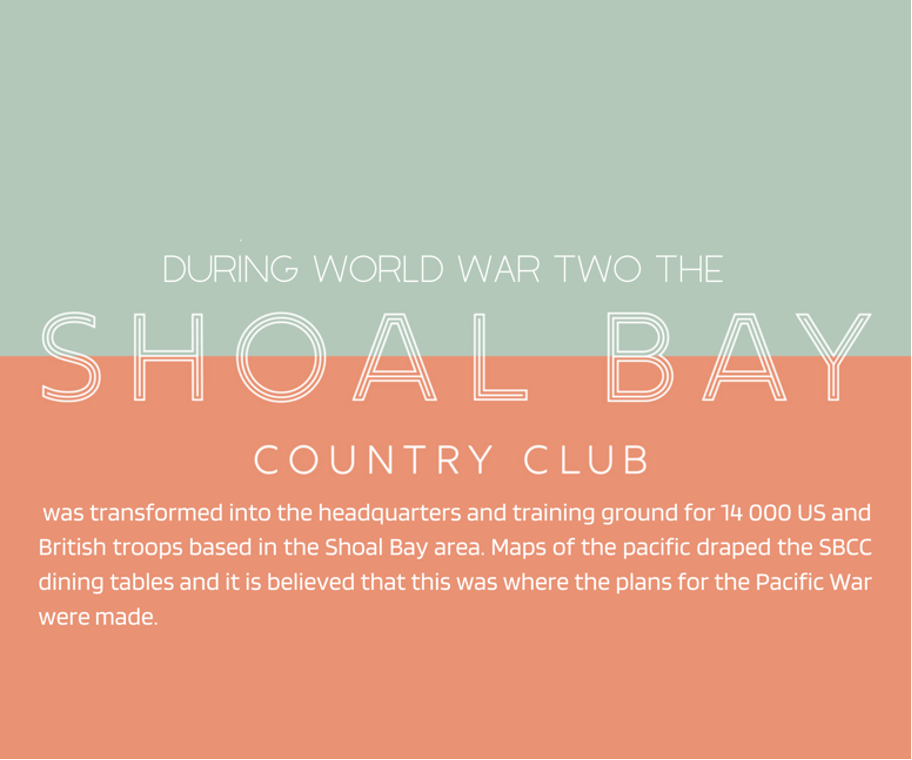I wonder how many people who have sat down for a beer at the Shoal Bay Country Club (SBCC) have at some stage in their lives thumbed through the pages of The History of the Peloponnesian Wars by Thucydides? Or immersed themselves in the history of the Holocaust? Which patrons love to spend a rainy afternoon snuggled up reading a Peter Fitzsimons novel, or sit down on a Friday night to watch a documentary on Pompeii? Quite a fair few, I’m sure. In the same breath, there must also be many who wouldn’t fancy any of these options, occupied instead with, say, something sciencey or sporty or arty. And that’s fair enough! Everyone is different. Or maybe, just maybe, is the way in which we traditionally tell history inclined to appeal to a particular audience, thereby rendering itself inaccessible to the rest of society?
Conducting an investigation into the history of the Shoal Bay Country Club got me thinking about the correlation between how we write history and who engages with history. When I was sorting through the archives of the venue, I was intrigued to learn of the role of the SBCC in WWII, and find out about the fire that partially destroyed the building in the 1950s. When conducting further research, I immersed myself in the Aboriginal history of the area and came across extensive newspaper coverage of a missing SBCC guest in 1949, who was presumed dead. My first instinct was to collate all of these pieces into one streamlined historical account of the venue. I acted on this and completed a 12 page ‘History of the SBCC’ that includes all the photos, drawings, cartoons and anecdotes I collected from both the venue and further research. Yet whilst this was a step in the right direction, it didn’t feel right that the history of a pub was exclusively located in a written document, accessible primarily to the few who actively attempted to seek it out. What format of history was most appealing to a crowd of beer drinking, holiday going patrons? As I pondered this question whilst sipping on my drink at the public bar of the SBCC, the answer lay right underneath my Lychee Lane cocktail…
The beer coaster originated from somewhere in Germany in the 1880s, and was formally manufactured by the print shop Friedrich Horn. For centuries, coasters have absorbed condensation, prevented spillages and at one point or another been the object on which a mobile number has hastily been written and handed to an unsuspecting target. Scattered across pub tables and used by nearly everyone, this object offers the perfect canvas upon which to incorporate small, bite sized pieces of history to beer drinking patrons about the venue they sit in.

To action this plan, I drafted five different designs. Each of them represents a ‘moment’ in the history of the SBCC. On one side is a date and few sentence summary about the particular era, and on the reverse is a collage of photos from both that period as well as others. If eventually implemented, I believe the coasters could kickstart conversations, inform patrons and engage a certain audience in the history of the venue who may not have otherwise had any means of doing so. When reopening the venue in 2018, new owner Andrew Lazarus stated that “we wanted to reignite this passion with the refurb and bring something fresh and exciting to the Port Stephens area whilst ensuring the hotel’s history has been preserved.” Achieving the desired balance between the past, the present and the future requires innovative approaches to the telling of history, and I hope that I have in some part contributed to the objective.

‘History beyond the classroom’ has been a whirlwind of managing expectations, tackling unanticipated obstacles and adapting to change. My project is far from over, but my appreciation for the weird and wonderful world of history and history-making has never been greater. I am excited to continue to watch my project with the SBCC unfold and look forward to future historical endeavours of this nature.
Cheers!
